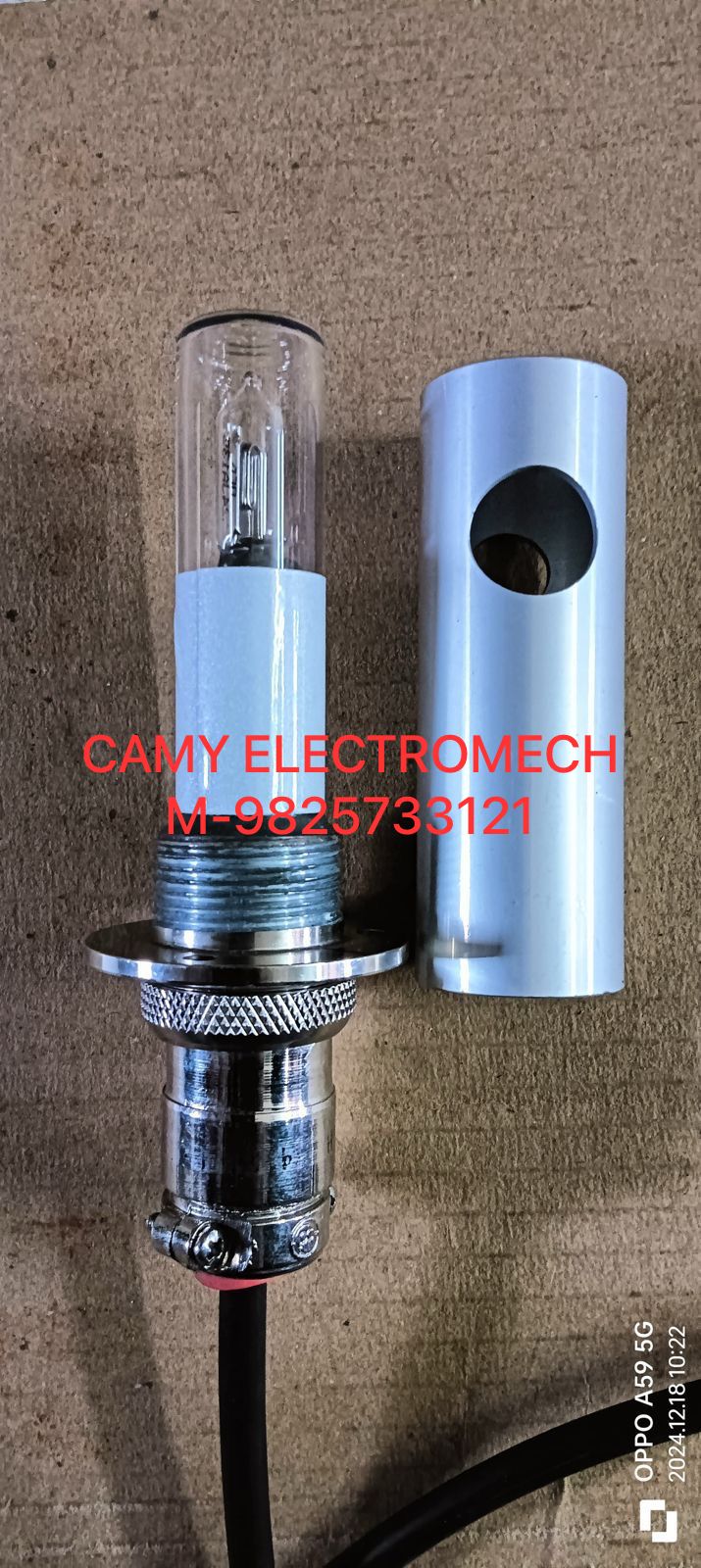
Welcome to our CAMY ELECTROMECH
We'are Open: 10:00 AM TO 7:00 PM
UVS-1 UV SENSOR


UVS-1 UV SENSOR
Description
A UV (ultraviolet) sensor in a flame detector is a component that detects ultraviolet radiation, a type of electromagnetic radiation with wavelengths shorter than visible light but longer than X-rays. Flame detectors utilize UV sensors to rapidly detect the presence of flames by sensing the UV radiation emitted by the flames, allowing for a fast and effective response to fire hazards.
How UV Sensors Work in Flame Detectors:
1. UV Radiation Emission: Flames, particularly those from hydrocarbon fires, emit UV radiation.
2. Sensor Detection: The UV sensor is designed to detect this specific range of UV radiation, typically with wavelengths shorter than 300 nm.
3. Signal Processing: When UV radiation from a flame hits the sensor, it generates a signal. This signal is then processed by the detector's circuitry.
4. Alarm Activation: If the processed signal exceeds a predetermined threshold, the detector activates an alarm, indicating the presence of a fire.
Benefits of UV Sensors:
• Fast Response Time: UV flame detectors can detect fires quickly, often within milliseconds.
• Sensitivity to Various Fires: UV sensors are sensitive to most types of fires, including those with open flames and those involving hydrocarbons.
• Resistance to Sunlight: UV sensors are often designed to be resistant to sunlight and other forms of artificial light, minimizing false alarms.
Applications of UV Flame Detectors:
UV flame detectors are commonly used in gas and oil fire burner applications.
How UV Sensors Work in Flame Detectors:
1. UV Radiation Emission: Flames, particularly those from hydrocarbon fires, emit UV radiation.
2. Sensor Detection: The UV sensor is designed to detect this specific range of UV radiation, typically with wavelengths shorter than 300 nm.
3. Signal Processing: When UV radiation from a flame hits the sensor, it generates a signal. This signal is then processed by the detector's circuitry.
4. Alarm Activation: If the processed signal exceeds a predetermined threshold, the detector activates an alarm, indicating the presence of a fire.
Benefits of UV Sensors:
• Fast Response Time: UV flame detectors can detect fires quickly, often within milliseconds.
• Sensitivity to Various Fires: UV sensors are sensitive to most types of fires, including those with open flames and those involving hydrocarbons.
• Resistance to Sunlight: UV sensors are often designed to be resistant to sunlight and other forms of artificial light, minimizing false alarms.
Applications of UV Flame Detectors:
UV flame detectors are commonly used in gas and oil fire burner applications.
